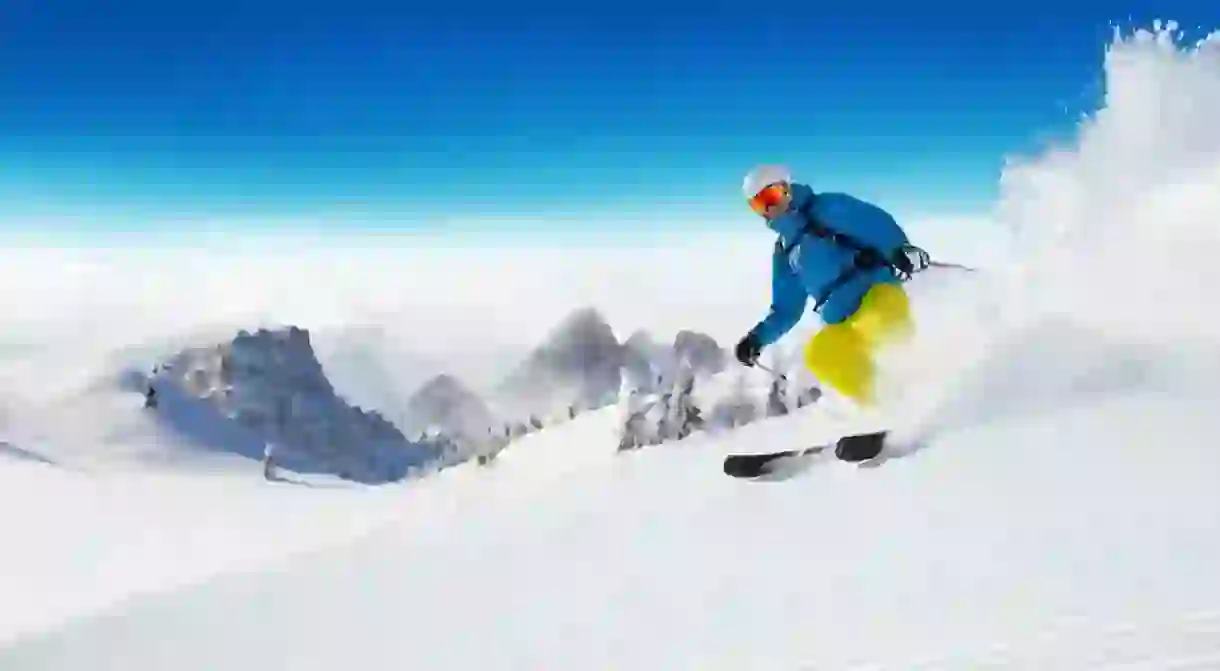7 Epic Reasons Why You Need to Ski the Dolomites at Least Once

The jagged limestone peaks of the Dolomite mountain range look unlike any other area of the Alps, and the best of Austrian and Italian culture conflate in its villages, rifugi (mountain cabins) and menus. But it’s not just the beauty and food that people return for every year: the Dolomite slopes are internationally renowned for their size, range and snow consistency. Need more reasons why the Dolomites make for such an epic and memorable ski holiday? Read on!
It gets more sunshine than anywhere else in the alps
The northern Dolomites (Sudtirol / Alto Adige) are protected from storms and fog by the Southern Dolomites (the Brenta Group and Lake Garda area), meaning whiteouts and overcast weather are very rare and you can enjoy skiing under a cloudless, sunny sky. On average, 8 days out of every 10 are sunny.

Almost guaranteed snow
Major investment has been put into snow canons, which means as long as the temperatures are low enough, snow is guaranteed. The Telegraph has reported that out of 1,200km of pistes in the region, 1,100km are covered by snowmaking machinery. Not only does this mean that you can relax about booking early or late in the season, but the slopes stay in brilliant, powdery condition all the time.
The Sellaronda at Sella Massif
The Sellaronda is the spectacular network of cable cars, ski lifts and slopes that connect four separate pistes of the Sella Massif area, meaning visitors can ski all day without repeating the same slope. One pass offers access to Val Gardena, Alta Badia, Arabba and Val di Fassa, and there is both a clockwise and anti-clockwise route. The Sella Massif panorama of rough peaks, forest and glistening white slopes is seemingly endless.

Competition standard courses
Expert skiers know they can be challenged in the Dolomites because it is home to two world cup courses – Sass Longer (in the Val Gardena/Gröden valley) and Gran Risa (Alta Badia).
The mountain range is a designated UNESCO world heritage site
The Dolomites have been awarded the UNESCO label of ‘Outstanding Universal Value’ due to its truly distinct alpine beauty and major earth scientific value. Even if geology doesn’t interest you, the dramatic forms of the pale limestone peaks will certainly take your breath away.

The food
Italy annexed Süd Tyrol from the Austro-Hungarian Empire in 1919, but even Mussolini’s Italianisation in the 1940s could not quash the Germanic culture of the region. In many parts, German remains the dominant language and the culinary heritage of the Austro-Hungarian empire is reflected in the rich local cuisine. Dolomite resorts have a side as glitzy and expensive as Switzerland’s Verbier or France’s Courchevel, so there is no shortage of fine dining, but travellers on a smaller budget can also dine like kings – traditional rifugi (cozy mountain huts that function as in pubs/cafés/inns) can be found on the slopes and in ski villages and serve up hearty dishes such as dumplings, stew with polenta and delectable South Tyrolean cold cuts and cheeses, all to be washed down with a glass of local Gewürztraminer or Pinot Grigio.
There are hardly any British skiers
Maybe hearing English on holiday doesn’t bother you, but for many, that feeling of escapism is somewhat marred when you clock a conversation in English – hearing a debate about the renationalisation of the British railway when you’re enjoying the stunning view from your cable car can somewhat take the edge off. Dolomite ski resorts are dominated by Italians and Austrians and it’s thought that under five per cent of ski visitors are from Britain.













